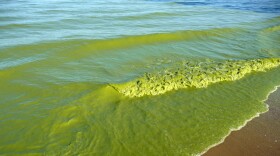-
What climate change is doing to Michigan's allergy season, two scientists team up to find ways to help kids living with autism sharpen their social skills, and the Great Lakes sailing adventure that changed writer Jerry Dennis’ life.
-
The State of Michigan is using $3.65 million to establish or restore wetland areas. Ducks Unlimited is administering the program. A request for proposals has been issued.
-
Michigan won't reach the phosphorus reduction goal by 2025 as planned. It's uncertain when it might attain that goal to help reduce cyanobacterial blooms in Lake Erie.
-
In 2015, Ohio, Michigan and Ontario gave themselves until 2025 to reduce phosphorus spilling into Lake Erie by 40% compared to 2008 levels. They won’t meet the deadline.
-
Water quality sensors in Lake Erie are being networked to make more data accessible to researchers and government agencies, as well as the public.
-
Researchers are studying how much of cyanobacterial toxins become airborne. They say breathing in the toxins is much worse than ingesting them.
-
Detroit water shut-offs ramp up, alga-blooms in the Great Lakes, behind the scenes at Beaver Island and touring musicians transform the pandemic lockdown into creativity.
-
Two decades of study reveals a complex combination of factors causing large cyanobacterial blooms and their toxicity. Government incentives to reduce nutrient pollution from farms have not been enough to solve the problem so far.
-
NOAA satellite images and a research vessel sampling Lake Erie water both found evidence of harmful algal blooms on July 5, a much earlier date than typical.
-
NOAA scientists and other researcher project that cyanobacterial blooms will not be a widespread this summer in the western basin of Lake Erie.
Play Live Radio
Next Up:
0:00
0:00
Available On Air Stations










